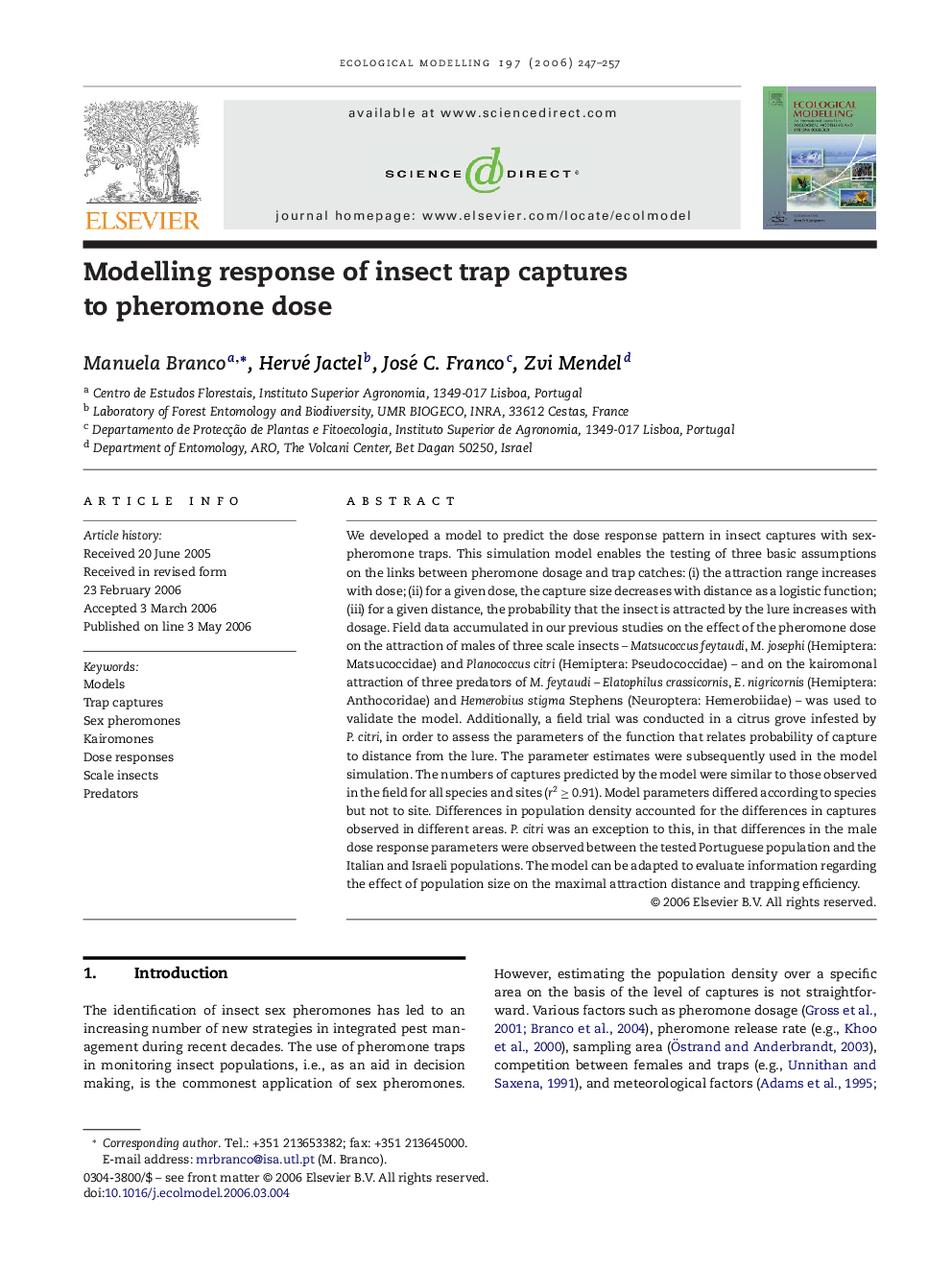| Article ID | Journal | Published Year | Pages | File Type |
|---|---|---|---|---|
| 4378912 | Ecological Modelling | 2006 | 11 Pages |
Abstract
We developed a model to predict the dose response pattern in insect captures with sex-pheromone traps. This simulation model enables the testing of three basic assumptions on the links between pheromone dosage and trap catches: (i) the attraction range increases with dose; (ii) for a given dose, the capture size decreases with distance as a logistic function; (iii) for a given distance, the probability that the insect is attracted by the lure increases with dosage. Field data accumulated in our previous studies on the effect of the pheromone dose on the attraction of males of three scale insects - Matsucoccus feytaudi, M. josephi (Hemiptera: Matsucoccidae) and Planococcus citri (Hemiptera: Pseudococcidae) - and on the kairomonal attraction of three predators of M. feytaudi - Elatophilus crassicornis, E. nigricornis (Hemiptera: Anthocoridae) and Hemerobius stigma Stephens (Neuroptera: Hemerobiidae) - was used to validate the model. Additionally, a field trial was conducted in a citrus grove infested by P. citri, in order to assess the parameters of the function that relates probability of capture to distance from the lure. The parameter estimates were subsequently used in the model simulation. The numbers of captures predicted by the model were similar to those observed in the field for all species and sites (r2 â¥Â 0.91). Model parameters differed according to species but not to site. Differences in population density accounted for the differences in captures observed in different areas. P. citri was an exception to this, in that differences in the male dose response parameters were observed between the tested Portuguese population and the Italian and Israeli populations. The model can be adapted to evaluate information regarding the effect of population size on the maximal attraction distance and trapping efficiency.
Related Topics
Life Sciences
Agricultural and Biological Sciences
Ecology, Evolution, Behavior and Systematics
Authors
Manuela Branco, Hervé Jactel, José C. Franco, Zvi Mendel,
